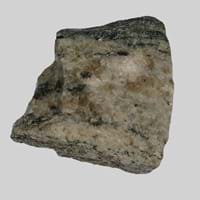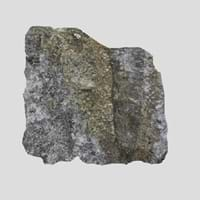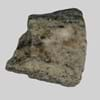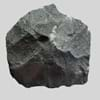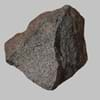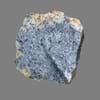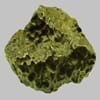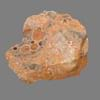Litchfieldite and Marl
Definition
Definition
Litchfieldite is a rare igneous rock which is coarse-grained, foliated and a variety of nepheline syenite, sometimes also called as nepheline syenite gneiss or gneissic nepeheline syenite
Marl is an unconsolidated sedimentary rock consisting of clay and lime
History
Origin
USA
Unknown
Discoverer
Bayley
Unknown
Etymology
From its occurrence at Litchfield, Maine, USA
From Old French marle, from Late Latin marglia
Class
Igneous Rocks
Sedimentary Rocks
Sub-Class
Durable Rock, Medium Hardness Rock
Durable Rock, Soft Rock
Family
Group
Plutonic
Not Applicable
Other Categories
Coarse Grained Rock, Opaque Rock
Fine Grained Rock, Opaque Rock
Texture
Texture
Granular
Earthy
Color
Brown, Buff, Cream, Green, Grey, Pink, White
Beige, Brown, Green, Grey, White
Maintenance
Less
Less
Durability
Durable
Durable
Water Resistant
Yes
Yes
Scratch Resistant
Yes
No
Stain Resistant
Yes
No
Wind Resistant
No
No
Acid Resistant
No
No
Appearance
Banded and Foilated
Rough and Dull
Uses
Architecture
Interior Uses
Countertops, Decorative Aggregates, Flooring, Interior Decoration
Decorative Aggregates, Floor Tiles
Exterior Uses
As Building Stone, As Facing Stone, Garden Decoration
As Building Stone, Roof Tiles
Other Architectural Uses
Curbing
Curbing
Industry
Construction Industry
As Dimension Stone, Cement Manufacture, Construction Aggregate, for Road Aggregate, Landscaping, Making natural cement, Manufacture of Magnesium and Dolomite Refractories, Production of Glass and Ceramics
Cement Manufacture, Construction Aggregate, for Road Aggregate, Making natural cement, Raw material for the manufacture of mortar
Medical Industry
Not Available
Not Available
Antiquity Uses
Artifacts, Monuments, Sculpture
Artifacts, Jewellery, Sculpture, Small Figurines
Other Uses
Commercial Uses
Creating Artwork
Creating Artwork, Soil Conditioner
Types
Types
Borolanite and Litchfieldite
Clay Marl ,Blue Marl, Red Marl, High Bank Marl, Shell Layer Marl, Under Shell Layer Marl, Sand Marl, Green Marl, Grey Marl and Clayey Marl
Features
Application of acids on the surface causes cloudy frosting, Available in Lots of Colors and Patterns, Dissolves in hydrochloric acid, Is one of the oldest rock
Generally rough to touch, Is one of the oldest rock, Splintery, Very fine grained rock
Archaeological Significance
Monuments
Used
Not Yet Used
Famous Monuments
Not Available
Not Applicable
Sculpture
Used
Used
Famous Sculptures
Not Available
Not Available
Pictographs
Used
Used
Petroglyphs
Used
Used
Figurines
Used
Used
Fossils
Absent
Present
Formation
Formation
Litchfieldite is a fine-grained, hard rock which is a type of metasomatite, essentially altered basalt. It forms with or without crystallization, either below the surface as intrusive rocks or on the surface as extrusive rocks.
Marl forms when very fine-grained clay particles are deposited in water which settles at the bottom of water bodies and are compacted by overlying sediment; the water squeezes out and hence forming Marl rock.
Composition
Mineral Content
Albite, Amphibole, Biotite, Cancrinite, Feldspar, Hornblende, Plagioclase, Pyroxene, Sodalite
Calcite, Clay, Dolomite, Gypsum, Micas, Pyrite, Quartz
Compound Content
Aluminium Oxide, CaO, Iron(III) Oxide, FeO, Potassium Oxide, MgO, MnO, Sodium Oxide, Phosphorus Pentoxide, Silicon Dioxide, Titanium Dioxide
Aluminium Oxide, NaCl, CaO, Iron(III) Oxide, Silicon Dioxide
Transformation
Metamorphism
Yes
No
Types of Metamorphism
Burial Metamorphism, Cataclastic Metamorphism, Contact Metamorphism, Impact Metamorphism
Not Applicable
Weathering
Yes
Yes
Types of Weathering
Biological Weathering, Mechanical Weathering
Biological Weathering, Chemical Weathering
Erosion
Yes
Yes
Types of Erosion
Coastal Erosion, Water Erosion, Wind Erosion
Chemical Erosion, Coastal Erosion, Water Erosion, Wind Erosion
Properties
Physical Properties
Hardness
5.5-6
2-3
Grain Size
Coarse Grained
Very fine-grained
Fracture
Conchoidal to Uneven
Conchoidal
Streak
White
White
Porosity
Less Porous
Highly Porous
Luster
Greasy to Dull
Dull
Compressive Strength
150.00 N/mm2
14
Not Available
Cleavage
Not Available
Not Available
Toughness
Not Available
2.6
Specific Gravity
2.6
2.2-2.8
Transparency
Translucent to Opaque
Opaque
Density
2.6 g/cm3
2.4-2.8 g/cm3
Thermal Properties
Resistance
Heat Resistant, Impact Resistant, Wear Resistant
Heat Resistant, Impact Resistant
Reserves
Deposits in Eastern Continents
Asia
Not Available
India, Pakistan, Russia
Africa
South Africa
Ethiopia, Kenya, Morocco, South Africa
Europe
Finland, Norway, Portugal
Austria, France, Germany, Greece, Italy, Romania, Scotland, Spain, Switzerland
Others
Not Available
Not Available
Deposits in Western Continents
North America
Canada
USA
South America
Brazil
Colombia, Ecuador, Peru
Deposits in Oceania Continent
Australia
Not Available
New South Wales, Victoria, Western Australia
All about Litchfieldite and Marl Properties
Know all about Litchfieldite and Marl properties here. All properties of rocks are important as they define the type of rock and its application. Litchfieldite belongs to Igneous Rocks while Marl belongs to Sedimentary Rocks.Texture of Litchfieldite is Granular whereas that of Marl is Earthy. Litchfieldite appears Banded and Foilated and Marl appears Rough and Dull. The luster of Litchfieldite is greasy to dull while that of Marl is dull. Litchfieldite is available in brown, buff, cream, green, grey, pink, white colors whereas Marl is available in beige, brown, green, grey, white colors. The commercial uses of Litchfieldite are creating artwork and that of Marl are creating artwork, soil conditioner.
|
||
|
||
|
|
||
|
||
|
